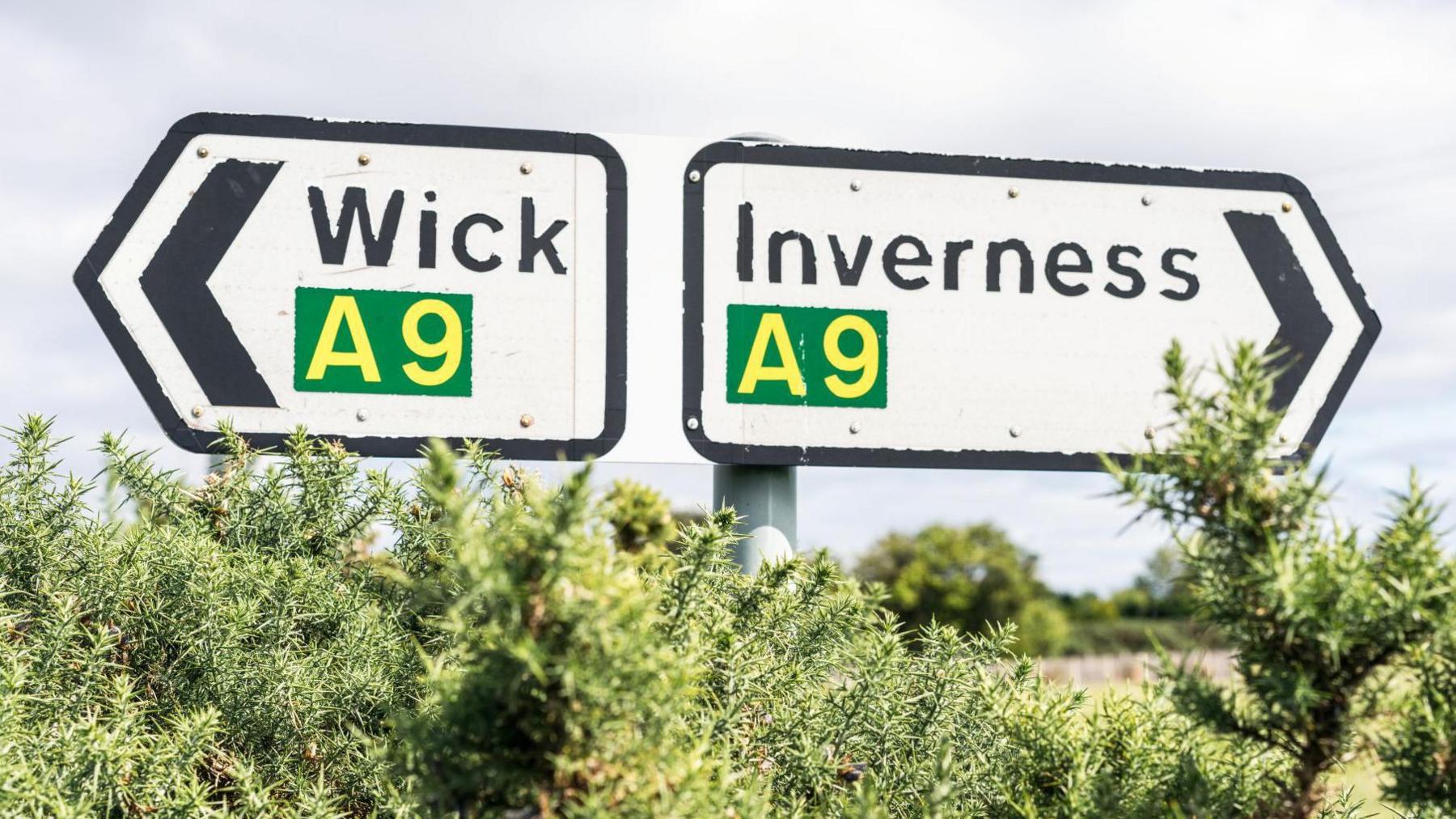Business groups oppose 60 to 50mph speed limit plan

Long stretches of the A9 are single carriageway
- Published
Business groups in the north of Scotland say they have serious concerns about proposals to reduce the speed limit on single carriageway roads from 60 to 50mph.
The Scottish government has said the move would improve safety.
Its agency Transport Scotland is analysing more than 19,500 responses to a public consultation held on the plans.
But chambers of commerce in the Highlands and Moray have spoken out against the move, saying it would harm connectivity, further disadvantage rural communities and fail deliver the intended improvements.
Driver frustration
Transport Scotland sought views on its National Speed Management Review, external. The consultation closed in March.
The proposals also include increasing speed limits for goods vehicles over 7.5 tonnes on single carriageways from 40 to 50 mph and on dual carriageways from 50 to 60mph.
Transport Scotland said the review suggested the changes could significantly reduce collisions, while maintaining journey times and enhancing travel time reliability.
But Caithness, Cairngorms, Inverness, Moray and West Highland chambers of commerce oppose the move.
They are calling instead for a focus on investment in road improvements, maintenance and better signage.
The business groups said communities were already affected by delays to dualling of the A9 and A96, and the limited availability of public transport.
Colin Marr, chief executive of Inverness Chamber of Commerce, said the risk of accidents could increase due to some drivers becoming frustrated by the lower speed limit.
He added: "These roads aren't unsafe because of the speed limit, they're unsafe because they've not been looked after properly."
Upgrade delays
Transport Scotland said road safety was a top priority for the Scottish government, and it remained fully committed to the goal of making Scotland's roads the safest in the world by 2030.
A spokesperson said: "The changes to speed limits proposed through the National Speed Management Review represent a significant policy shift aimed at saving lives and reducing serious injuries on our roads.
"It was essential that we engaged with key stakeholders and the public to gather a wide range of views before making recommendations."
The Scottish government said in December 2023 completing the dualling of the A9 between Inverness and Perth would be delayed by 10 years until 2035.
It said a new rolling programme of improvements was "achievable" and there would be "no let up" in the work.
Two sections of single carriageway totalling 11 miles (18km) of road have been upgraded over the past decade - but 77 miles of the route has still to be dualled.
The A9 is single carriageway for 104 miles from the Tore Roundabout on the Black Isle north to Scrabster, with some sections featuring hills and bends around the coast.
Making the A96 between Aberdeen and Inverness fully dual carriageway remains the "current favoured position", the Scottish government said in June.
Transport Scotland had published a new report summarising public feedback from a consultation on options aimed at improving the route.
It was passed to Transport Secretary Fiona Hyslop, who said the preferred option had not changed from full dualling.
Last year, a 2011 commitment to upgrade 86 miles (138km) of the route by 2030 was abandoned by the Scottish government.